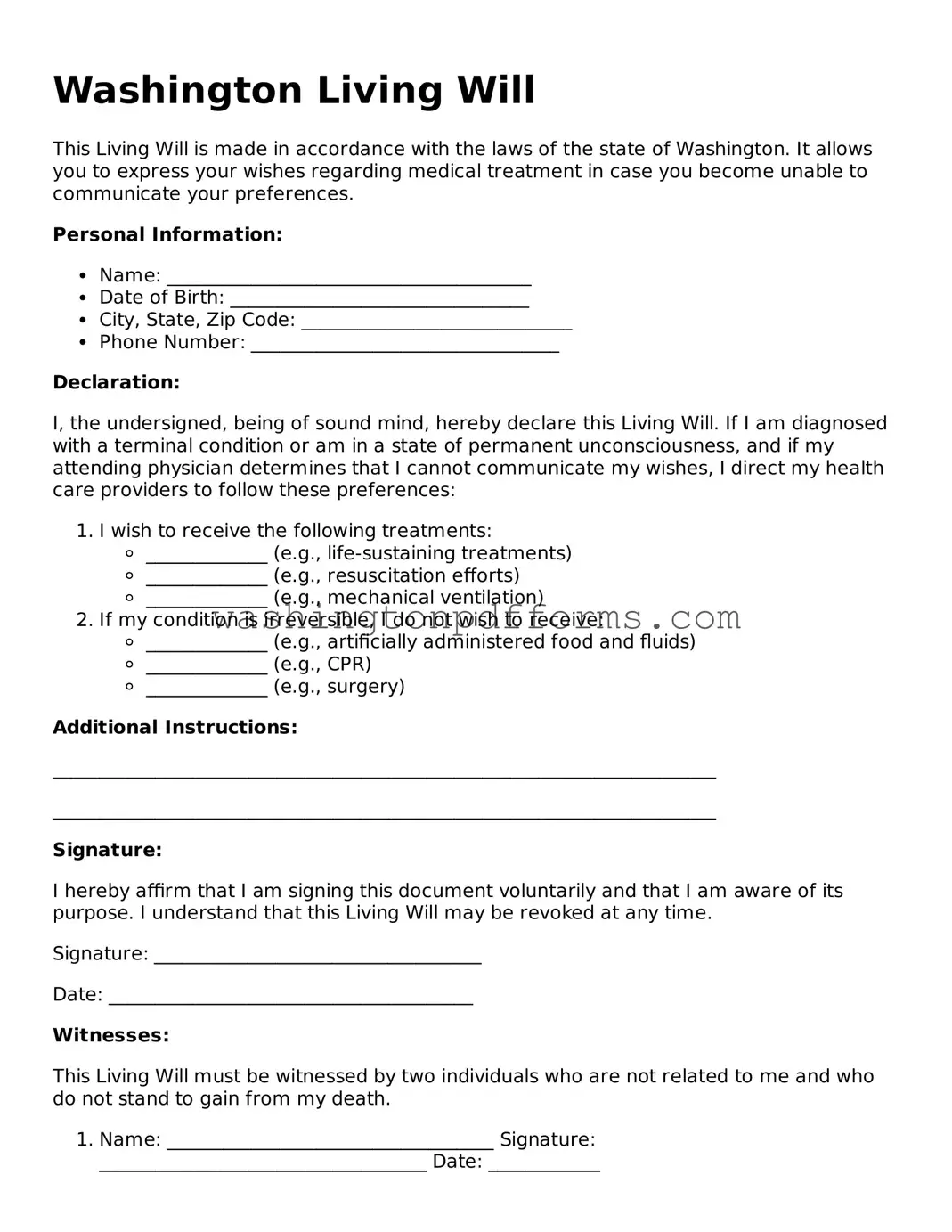Filling out a Washington Living Will form is a crucial step in ensuring that your healthcare wishes are respected when you can no longer communicate them. However, many people make mistakes during this process that can lead to confusion or unintended outcomes. Understanding these common pitfalls can help you navigate the form more effectively.
One frequent error is not specifying clear medical preferences. When individuals fill out the form, they may assume that their loved ones know their wishes. However, vague statements can lead to misunderstandings. It’s essential to articulate your preferences regarding life-sustaining treatments and other medical interventions clearly. This clarity helps ensure that your healthcare providers and family members understand your desires.
Another mistake involves failing to update the document. Life circumstances change, and so do personal values and health conditions. It’s important to revisit your Living Will periodically, especially after major life events such as marriage, divorce, or a significant health diagnosis. Keeping the document current ensures that it accurately reflects your current wishes.
Some people neglect to discuss their Living Will with family and healthcare providers. This oversight can lead to confusion during critical moments. Engaging in open conversations about your wishes can help your loved ones understand your decisions. It also prepares them to advocate for your preferences if the need arises.
In addition, not designating a healthcare proxy can be a significant oversight. While a Living Will outlines your wishes, a healthcare proxy acts as your voice when you cannot speak for yourself. Choosing someone you trust to make decisions on your behalf is vital. This person should be aware of your values and preferences to ensure they represent your wishes accurately.
Another common mistake is not signing the form properly. A Living Will must be signed and dated to be legally valid. Additionally, it often requires witnesses or notarization, depending on state laws. Failing to follow these requirements can render the document ineffective, leaving your wishes unprotected.
Lastly, many individuals overlook the importance of keeping copies of the Living Will. After filling out the form, it’s crucial to distribute copies to your healthcare proxy, family members, and primary care physician. Having these copies readily available ensures that your wishes are easily accessible when needed. It also prevents any delays in care that might arise from searching for the document during a crisis.
